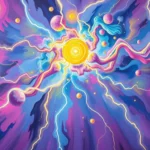
Dreams have long captivated the human imagination, serving as a mysterious bridge between our conscious and subconscious minds. The idea that dreams can hold predictive power or reveal hidden truths has intrigued people across cultures and throughout history. In this exploration of dreams as predictive symbols, we will delve into their symbolism, examine key scenarios and variations, and provide insights on how to connect these dreams to real-life situations.
Symbolism and Meaning
When we consider dreams as predictive symbols, it is essential to understand that they often communicate through symbolism. Each element within a dream can be laden with meaning, reflecting our inner thoughts, fears, and desires.
Common symbols in predictive dreams may include water, which often represents emotions and the unconscious. A dream where one is floating on a calm sea might suggest a period of emotional stability, while turbulent waves could indicate impending emotional upheaval. Similarly, flying is a prevalent dream symbol that can signify freedom, ambition, or the desire to escape a particular situation. Flying high could indicate that one is overcoming challenges, while a struggle to gain altitude might represent obstacles in waking life.
Animals also play a significant role in dream symbolism. A snake, for instance, often symbolizes transformation or hidden fears. The interpretation may vary based on the dreamer’s personal associations with the animal. For some, a snake might evoke feelings of dread, while for others, it could represent renewal and healing.
Colors in dreams have their own unique meanings as well. For example, red can symbolize passion or anger, while blue may evoke feelings of calm or sadness. The specific colors that dominate a dream can offer clues about the emotional state of the dreamer and the potential messages being conveyed.
Considering these symbols from different perspectives is crucial. Cultural context, personal experiences, and current life situations can all shape how one interprets the symbols present in their dreams. For example, in some cultures, a black cat might symbolize bad luck, while in others, it can represent protection and good fortune. Thus, understanding the underlying meaning of each symbol and its relevance to your life is essential for interpreting dreams effectively.
Key Scenarios and Variations
The context of a dream can significantly alter its interpretation. Various scenarios can lead to different meanings, making it essential to consider the nuances of each dream experience.
For instance, a dream of losing a loved one may signify anxiety about potential loss or change. If the dreamer feels a sense of relief in the dream, it may symbolize the need to let go of certain attachments or emotional burdens. Conversely, if the dream is filled with grief and despair, it could highlight an unresolved fear of loss in waking life.
Another common scenario involves being chased, which often reflects feelings of anxiety or avoidance. If the pursuer is a known figure, it may represent a specific issue or person the dreamer is trying to evade. However, if the pursuer remains faceless, it could symbolize a more generalized fear or anxiety that the dreamer has yet to confront. The outcome of the chase—whether the dreamer escapes or is caught—can also provide deeper insights into one’s coping mechanisms and emotional state.
Consider the dream of taking an important exam. This scenario often relates to feelings of inadequacy or fear of failure. If the dreamer is unprepared, it may reflect anxiety about meeting expectations in waking life. However, if the dreamer performs well, it might indicate readiness to face challenges ahead.
Moreover, dreams featuring travel can be particularly rich in symbolism. A journey can signify personal growth, change, or the exploration of new opportunities. A smooth journey may suggest confidence in navigating life’s transitions, while obstacles encountered along the way might symbolize internal struggles or fears about the future.
In each of these scenarios, the emotions experienced during the dream play a critical role in shaping its interpretation. The feelings associated with the dream can provide vital clues about its significance and how it relates to the dreamer’s waking life.
Real-Life Connections and Takeaways
Understanding the predictive nature of dreams can offer valuable insights into our waking lives. By reflecting on the symbols and scenarios present in our dreams, we can gain a deeper understanding of our emotions and experiences.
One practical approach is to keep a dream journal. Recording dreams immediately upon waking can help capture the fleeting details and emotions associated with each experience. Over time, patterns may emerge, revealing recurring themes or symbols that can provide insight into your subconscious mind.
As you reflect on your dreams, consider how they may connect to your current life circumstances. Are there unresolved conflicts that your dreams are trying to bring to light? Are you facing challenges that could benefit from a fresh perspective? By actively engaging with your dreams, you open the door to self-reflection and personal growth.
Engaging in practices like mindfulness and meditation can also enhance your awareness of your dreams. By cultivating a calm and receptive mindset, you may find it easier to interpret the messages hidden within your dreams. Additionally, discussing your dreams with a trusted friend or therapist can provide new perspectives and insights.
Lastly, it’s important to remember that not all dreams need to be taken literally. While some may hold predictive power, others may simply reflect our thoughts and feelings in a symbolic manner. Approaching your dreams with curiosity rather than fear can lead to a more profound understanding of yourself and your life.
In conclusion, dreams can serve as predictive symbols that offer insights into our subconscious. By exploring the symbolism and meaning behind common dream elements, examining key scenarios and variations, and connecting these dreams to our waking lives, we can unveil the enigma of our dreams. As you reflect on your dream experiences, remember to embrace the journey of self-discovery and personal growth. Each dream holds the potential to reveal deeper truths about who we are and the paths we are navigating.







